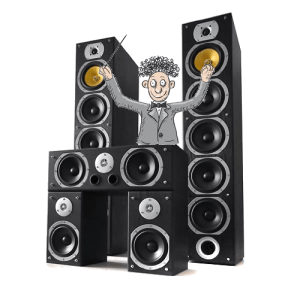For the avoidance of doubt to anyone who may be reading this… Errbody be wanting stems. Editorial want stems. Mixers want stems (maybe not as many as editorial, but while you’re at it you may as well stem that shit wide). Unless you’re John Williams, or intend to write exclusively orchestral music for French films, people will be expecting stems, and not providing them can hurt your chances of a) winning the work in the first place b) getting a sympathetic mix of your work vs. all the other stuff going on in a dub.
If, as a composer, you feel you can provide 12+ 5.1 mixed stems on a trailer or library music track without running into CPU, workflow, time or sheer headfuck limitations and you trust your monitoring and the calibration of said monitoring then by all means have at it and mix in surround. To my mind though, that gives a very poor cost/benefit ratio unless you’re specifically being asked to provide a 5.1 mix. The people pulling library tracks off the shelves to sync to picture would, in almost all circumstances, rather have a bunch of useable stereo stems than a single 5.1 mix, even if the final destination is a theatre (which, unless you’re an established name trailer composer, it’s unlikely to be, for now).


 . Thank you!
. Thank you!

